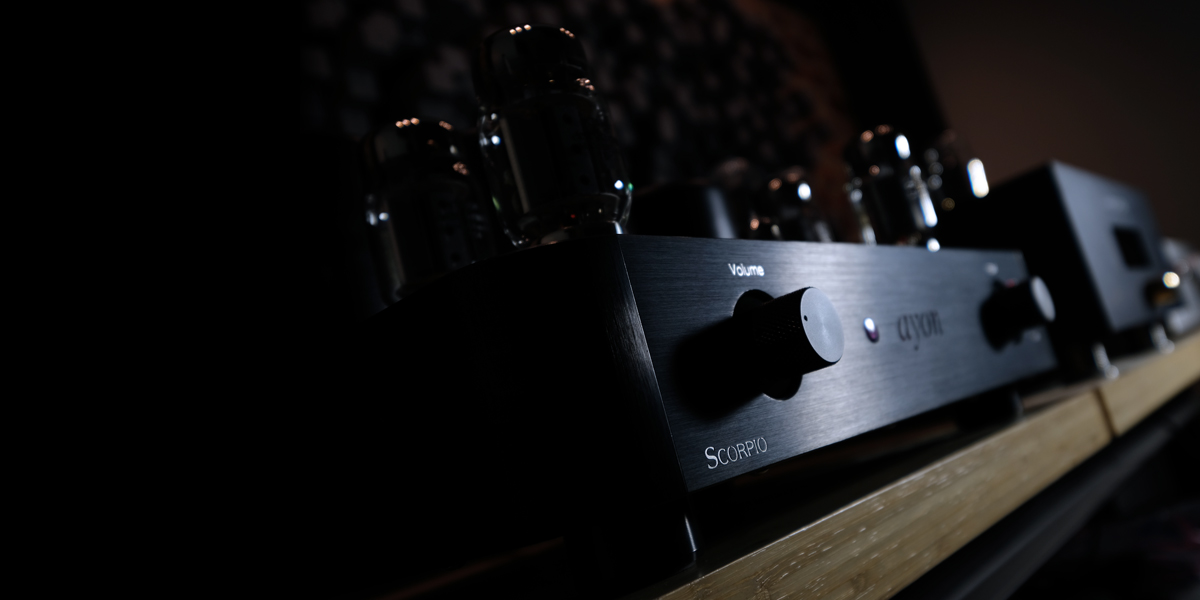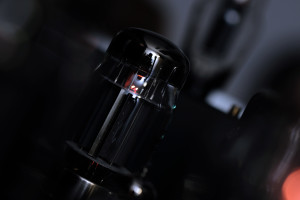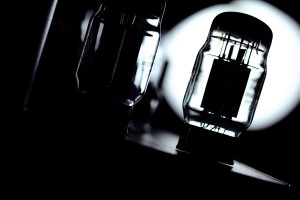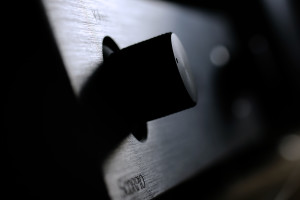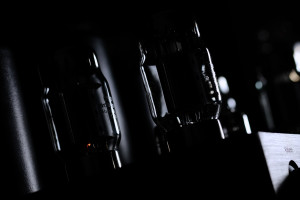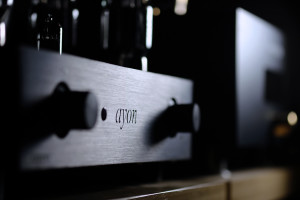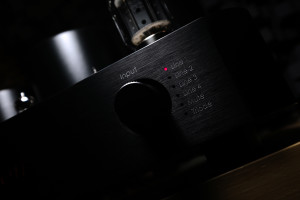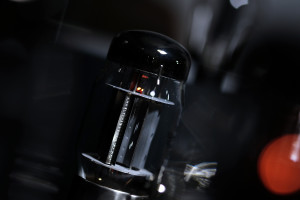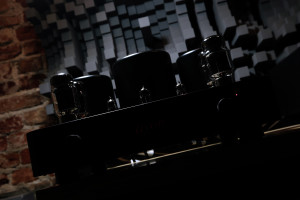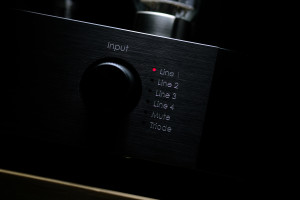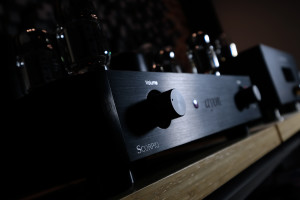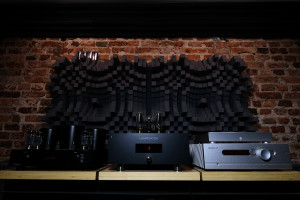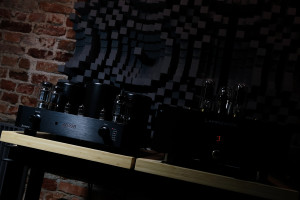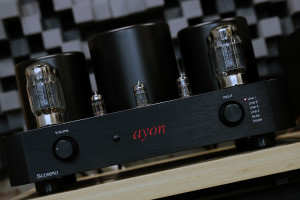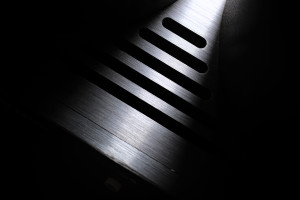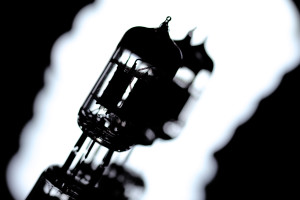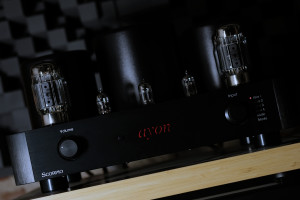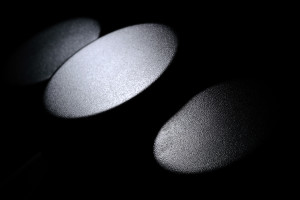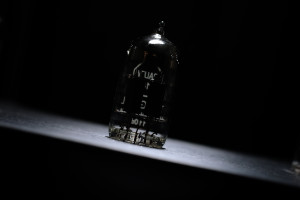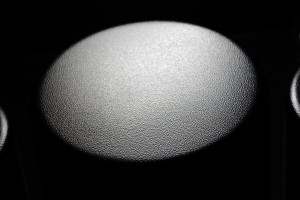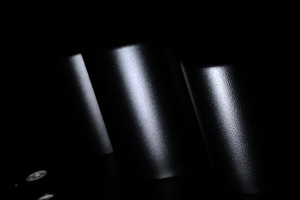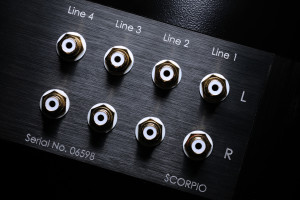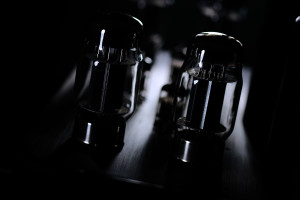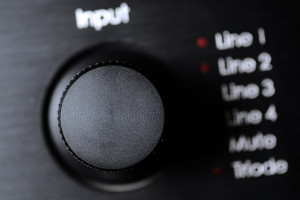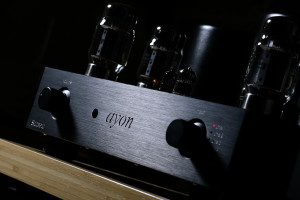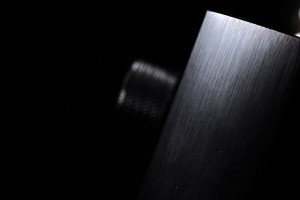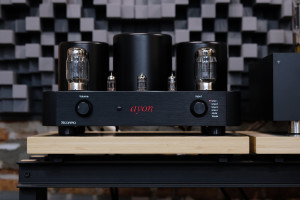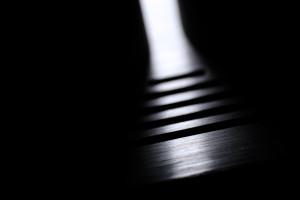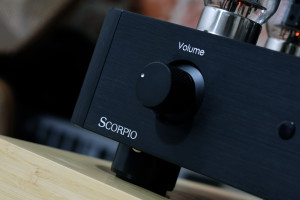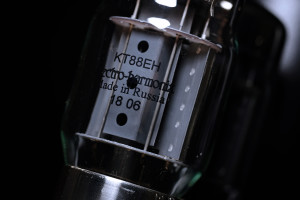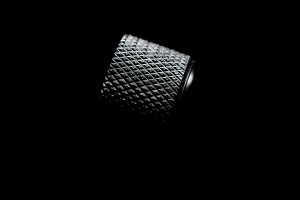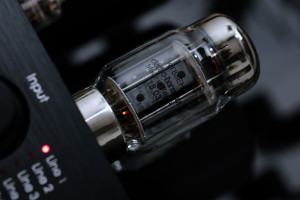Several utmost pleasant visits to Ayon’s rooms during various audio events eventually led to this publication, which covers said company’s the most affordable integrated effort to date – Ayon Scorpio. Enjoy!
Introduction
Ayon Audio is the name which should sound at least mildly familiar to all people into high calibre audio hardware and for a number of perfectly valid reasons. Ayon’s goods are visually peculiar, its portfolio we can easily label as extensive and years of ongoing activity upped the recognition ante rather well. This audio establishment is actually one of several brands under the Living Sound GmbH banner and Gerhard Hirt is its owner. The man got the valve bug as early as a teenager, is an engineer by education and his first valve amp known as the 52B Monoblock he developed in 1994 in Italian city of Vincenza. This introductory commercial audio attempt by Gerhard was based on Czech glass by AVVT (Alesa Vaic Vacuum Tube) and released under the Vaic Audio flag.
 The Ayon Audio trademark was registered in 1999 and – due to outgrowing Italian production line’s potential – the decision was made to move to Austria. In time Garhard bought a small factory in Hong Kong and some of Ayon’s semi-products were also made in Taiwan from 2000 t0 2005, however this company was then sold and metalwork returned to Europe, whereas key assembly and QC happens on the Austrian soil. That’s not all, though. Somewhere along the road Gerhard became the owner of a part of AVVT’s valve factory in Prague, which he then extensively upgraded, and the former Tesla’s chief tube engineer got onto Ayon’s payroll as well. A move this bold occurs extremely rarely in the industry. Most manufacturers known to me either fish for large quantities of NOS glass or buy from Psvane, Emission Labs, KR Audio, Elrog or Takatsuki directly to name several big players. That’s why Ayon Audio’s own tubes are clear indicators of quite the swing business wise. Due to distribution web spread across several dozens of countries, this operation’s well-established financial status doesn’t come as a surprise. Let me point out though that some of Ayon’s products are loaded with valves by i.e. Electro-Harmonix and Tung-Sol, i. e. this review’s hero.
The Ayon Audio trademark was registered in 1999 and – due to outgrowing Italian production line’s potential – the decision was made to move to Austria. In time Garhard bought a small factory in Hong Kong and some of Ayon’s semi-products were also made in Taiwan from 2000 t0 2005, however this company was then sold and metalwork returned to Europe, whereas key assembly and QC happens on the Austrian soil. That’s not all, though. Somewhere along the road Gerhard became the owner of a part of AVVT’s valve factory in Prague, which he then extensively upgraded, and the former Tesla’s chief tube engineer got onto Ayon’s payroll as well. A move this bold occurs extremely rarely in the industry. Most manufacturers known to me either fish for large quantities of NOS glass or buy from Psvane, Emission Labs, KR Audio, Elrog or Takatsuki directly to name several big players. That’s why Ayon Audio’s own tubes are clear indicators of quite the swing business wise. Due to distribution web spread across several dozens of countries, this operation’s well-established financial status doesn’t come as a surprise. Let me point out though that some of Ayon’s products are loaded with valves by i.e. Electro-Harmonix and Tung-Sol, i. e. this review’s hero.
 Ayon’s portfolio is generous enough to concoct a fully complete setup based on its goods exclusively. There’s one headphone amp, several integrated decks, preamplifiers, mono amps, cables and speakers. Around 40 different items in total enable quite the room to maneuver accordingly to one’s needs and available funds. But this aside, I’ve known Gerhard for several years, he’s a very kind man and we’ve always had something to talk about, even though this assignment is the first one work related. Interestingly the man takes good care of Ayon’s event rooms in person and always looks like someone who enjoys himself in there. Highly likely I’m repeating myself, but each of Ayon’s presentations I was lucky to visit and listen I simply enjoyed.
Ayon’s portfolio is generous enough to concoct a fully complete setup based on its goods exclusively. There’s one headphone amp, several integrated decks, preamplifiers, mono amps, cables and speakers. Around 40 different items in total enable quite the room to maneuver accordingly to one’s needs and available funds. But this aside, I’ve known Gerhard for several years, he’s a very kind man and we’ve always had something to talk about, even though this assignment is the first one work related. Interestingly the man takes good care of Ayon’s event rooms in person and always looks like someone who enjoys himself in there. Highly likely I’m repeating myself, but each of Ayon’s presentations I was lucky to visit and listen I simply enjoyed.
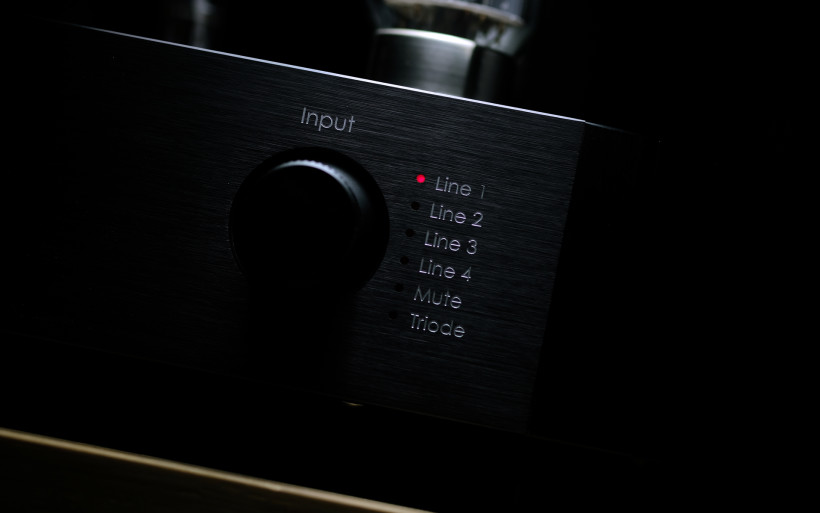 On a more personal note, each Ayon room left with new music to investigate at home became a sort of tradition for this reporter, that’s how he got himself familiar with i.e. fabulous voice of Mercedes Sosa. The procedure’s been quite similar thus far; past entering to Gerhard’s place and rather short listen, I rushed to him before track’s end to ask about its title. The man always smiles, kindly allows me to take a peek at his tablet, one fine musical taste he has and all these are additional reasons why I’m happy that one of his machines finally landed under my roof.
On a more personal note, each Ayon room left with new music to investigate at home became a sort of tradition for this reporter, that’s how he got himself familiar with i.e. fabulous voice of Mercedes Sosa. The procedure’s been quite similar thus far; past entering to Gerhard’s place and rather short listen, I rushed to him before track’s end to ask about its title. The man always smiles, kindly allows me to take a peek at his tablet, one fine musical taste he has and all these are additional reasons why I’m happy that one of his machines finally landed under my roof.
Build
I’ve never seen or heard Ayon Orion integrated, though Scorpio is its direct successor and one of the most affordable products in the Austrian portfolio currently. Many people would argue that this item listed in EU at €3’750 is anything but cheap and fully agreed, we’re on the same page. However, Scorpio rather swiftly shows where all the money went without any ifs or buts. It measures (WxDxH) 46x34x26cm and weighs generous 29 kilograms, thus is sized rather usually though heavy. I was able to manage it single-handedly without elbow grease, though even faintest thoughts about other Ayon amps invoke pain in my lower back already. The product delivered to my place was an integrated affair; a stereo power amp and preamplifier stuffed into one enclosure. Interestingly, Ayon Scorpio can be also had as a pair of compact and a bit pricier mono amps.
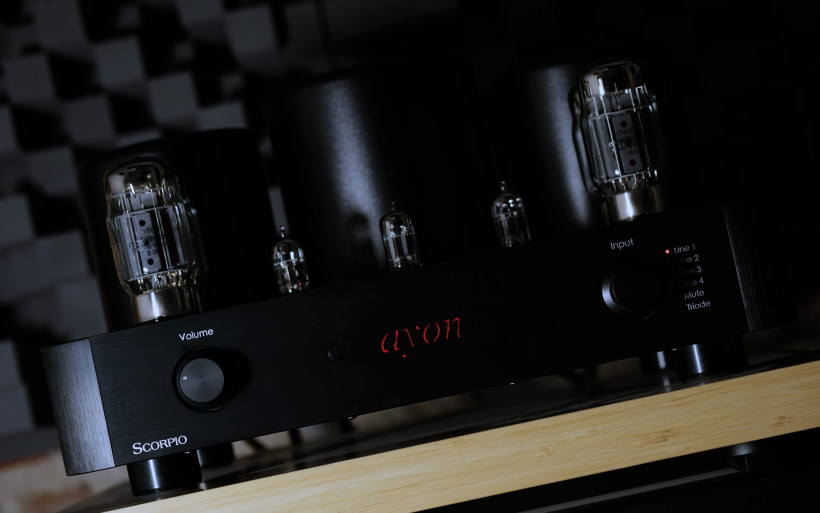 Loaded with valves and fully analogue Ayon Scorpio is free from popular digital fads, which is perfectly fine in my book. Puristic integrated, simple as that. All goods by Ayon are recognizable due to their visuals and this review’s machine is no different. Its enclosure’s anodized parts are bolted together to mechanically strengthen it and have unwanted resonances in check as well. The product’s vertical edges are slightly rounded, valve sockets understandably labeled and three large jars right behind these sport the same number of transformers; two output units on the sides and power converter in-between these. Each cylinder is filled with resin to increase damping and powder-coated in black to have the product visually uniform. Personally I enjoy this dark scheme a bit more than chromed parts reserved for Ayon’s upper echelon models.
Loaded with valves and fully analogue Ayon Scorpio is free from popular digital fads, which is perfectly fine in my book. Puristic integrated, simple as that. All goods by Ayon are recognizable due to their visuals and this review’s machine is no different. Its enclosure’s anodized parts are bolted together to mechanically strengthen it and have unwanted resonances in check as well. The product’s vertical edges are slightly rounded, valve sockets understandably labeled and three large jars right behind these sport the same number of transformers; two output units on the sides and power converter in-between these. Each cylinder is filled with resin to increase damping and powder-coated in black to have the product visually uniform. Personally I enjoy this dark scheme a bit more than chromed parts reserved for Ayon’s upper echelon models.
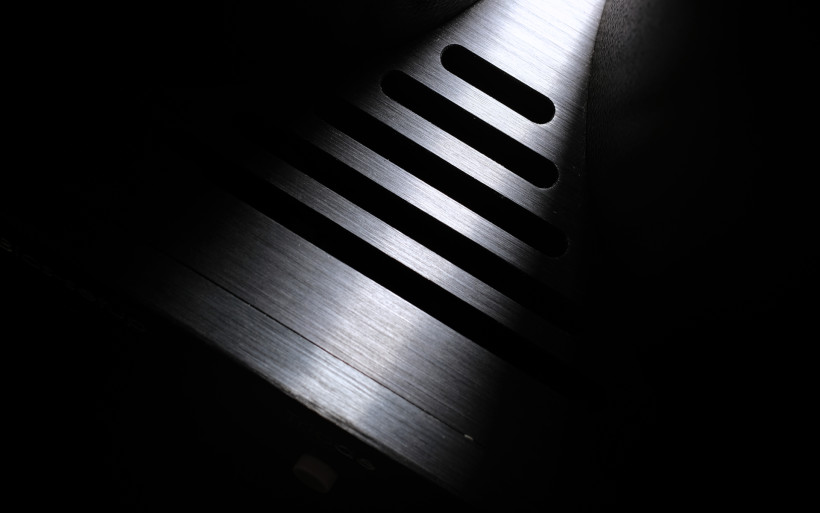 Two black and nicely knurled knobs on the product’s front are responsible for volume control (left) and input selection (right). Both look really nice and free from any looseness are pleasant to use. Volume adjustment is smooth and even, whereas input selector requires a spot on amount of force to turn. All labels nearby these are finished in matte white and perfectly readable. Once turned on/off, a large manufacturer’s logo on the machine’s front starts to blink to indicate readiness in progress, then after a minute it stays red. The overall black&red marriage I’ve found visually very tasteful, which hopefully photos in this article show properly. A small eye on the left side of the logo is for aluminium RC, whereas several diodes right next to the knob on the right indicate currently used input, mute engaged and the alternate operation mode, which we’ll investigate in a bit. Scorpio’s enclosure sits on four aluminium pucks loaded with rubber washers and several small openings near the valve socketry area up top help with venting.
Two black and nicely knurled knobs on the product’s front are responsible for volume control (left) and input selection (right). Both look really nice and free from any looseness are pleasant to use. Volume adjustment is smooth and even, whereas input selector requires a spot on amount of force to turn. All labels nearby these are finished in matte white and perfectly readable. Once turned on/off, a large manufacturer’s logo on the machine’s front starts to blink to indicate readiness in progress, then after a minute it stays red. The overall black&red marriage I’ve found visually very tasteful, which hopefully photos in this article show properly. A small eye on the left side of the logo is for aluminium RC, whereas several diodes right next to the knob on the right indicate currently used input, mute engaged and the alternate operation mode, which we’ll investigate in a bit. Scorpio’s enclosure sits on four aluminium pucks loaded with rubber washers and several small openings near the valve socketry area up top help with venting.
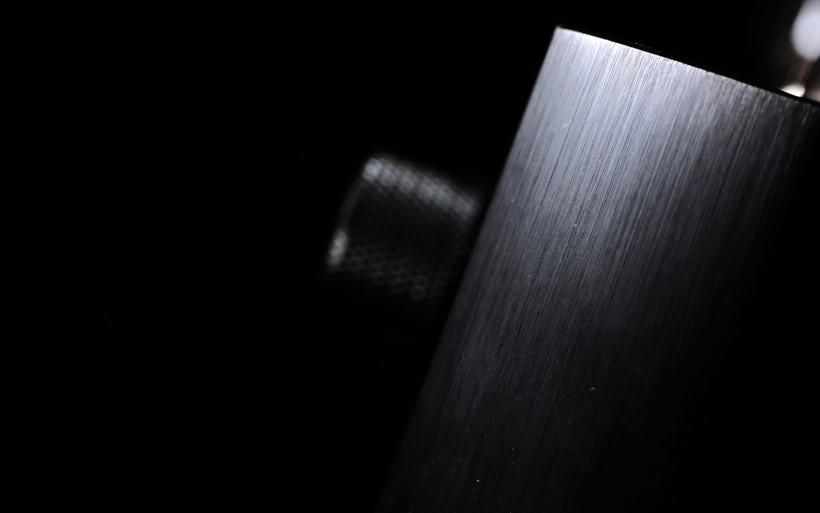 The usual suspects found on Ayon Scorpio’s rear neighbour with several unusual features. Its IEC inlet with self-replaceable fuse is located on the left, single solid speaker terminals next in line are universal for all kinds of loads and a bit further to the right we see four labeled RCA inputs in total. Digital display visible on the back counts down from 60 to 0 to indicate the soft start scheme on the job. Once the machine is turned on, each circuit part is checked internally and engaged one by one. Until that’s done, there’s no music and a minute to wait is a very small price to pay for prolonged life of all valves on-board. The Austrian arrives with these already measured and matched. Bueno.
The usual suspects found on Ayon Scorpio’s rear neighbour with several unusual features. Its IEC inlet with self-replaceable fuse is located on the left, single solid speaker terminals next in line are universal for all kinds of loads and a bit further to the right we see four labeled RCA inputs in total. Digital display visible on the back counts down from 60 to 0 to indicate the soft start scheme on the job. Once the machine is turned on, each circuit part is checked internally and engaged one by one. Until that’s done, there’s no music and a minute to wait is a very small price to pay for prolonged life of all valves on-board. The Austrian arrives with these already measured and matched. Bueno.
 Ayon’s most affordable integrated is a Class A push-pull affair with no negative feedback. Each of its channels is based on one pair of KT88EH beam tetrodes by Electro-Harmonix and three 12AU7 double triodes in total are on duty in the preamplifier stage. Two operation modes selectable via a small gray button located on the machine’s rear are its key function. Once pressed, it activates the triode option (30wpc, SE topology, full Class A bias), otherwise the pentode (45wpc) circuit is on, though to cycle between these safely the product has to be turned off. Valve bias is handled via Ayon’s own AFB system (ang. Auto-Fixed Bias), which was field-tested in i.e. Spirit model, though Scorpio’s rear also incorporates a small opening to fix bias manually. The integrated’s input impedance is 100 kΩ (1kHz), input sensitivity at full power is 500 mV and FR range is 15-50 000Hz.
Ayon’s most affordable integrated is a Class A push-pull affair with no negative feedback. Each of its channels is based on one pair of KT88EH beam tetrodes by Electro-Harmonix and three 12AU7 double triodes in total are on duty in the preamplifier stage. Two operation modes selectable via a small gray button located on the machine’s rear are its key function. Once pressed, it activates the triode option (30wpc, SE topology, full Class A bias), otherwise the pentode (45wpc) circuit is on, though to cycle between these safely the product has to be turned off. Valve bias is handled via Ayon’s own AFB system (ang. Auto-Fixed Bias), which was field-tested in i.e. Spirit model, though Scorpio’s rear also incorporates a small opening to fix bias manually. The integrated’s input impedance is 100 kΩ (1kHz), input sensitivity at full power is 500 mV and FR range is 15-50 000Hz.
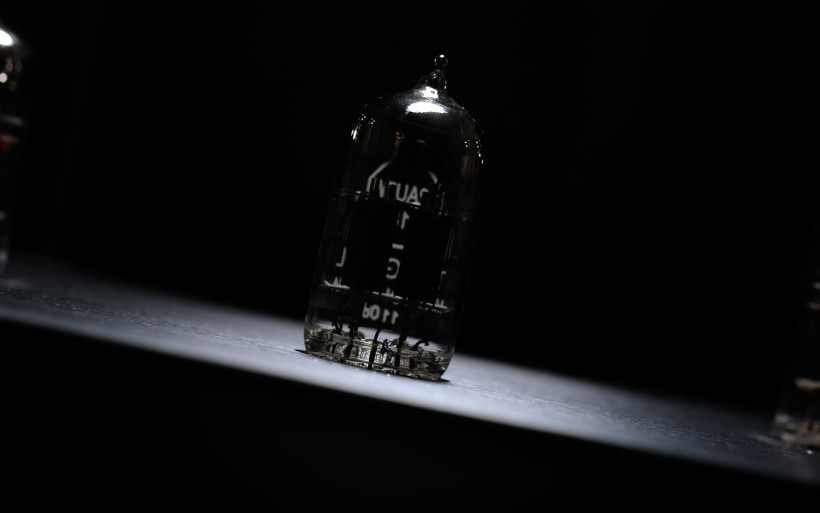 Due to my loaner’s weight and arrival from one of Warsaw’s shops directly, any attempt of opening it would’ve introduced real damage risk I’d have to cover from my own pocket and that’s something I always want to avoid. However, Scorpio’s on-site description is generous so let’s rely on it this time around. Circuit simplicity was the core principle and short routes in point-to-point fashion, overgrown power supply with separate components, filtering executed via chokes etc. followed. Many outer aspects of the product I was easily able to easily judge as well, i.e. clean and neat assembly. Its chassis I’ve found skillfully put together and a lot of attention to details was given. It always comes down to small things not visible or sensible at first glance; knobs turning finely, valve sockets ideally in the center of their openings, enclosure’s walls straight, diodes lit up evenly, channels at low volume balanced and free from junk, transformers’ cups dead silent when tapped etc. All these measures indicate whether a manufacturer put some effort, Ayon surely has and not knowing Scorpio’s ask I’d guess it’s of far pricier breed. This manufacturer’s most affordable integrated deck is simply this well-made and its usage quality I consider as very high; at my place it behaved predictably and reliably, didn’t introduce any weird noise even with high efficiency speakers and in general worked as intended on all fronts. Even though Scorpio’s price tag might suggest otherwise, this is a truly luxurious item. In its case it’s obvious where all the money went.
Due to my loaner’s weight and arrival from one of Warsaw’s shops directly, any attempt of opening it would’ve introduced real damage risk I’d have to cover from my own pocket and that’s something I always want to avoid. However, Scorpio’s on-site description is generous so let’s rely on it this time around. Circuit simplicity was the core principle and short routes in point-to-point fashion, overgrown power supply with separate components, filtering executed via chokes etc. followed. Many outer aspects of the product I was easily able to easily judge as well, i.e. clean and neat assembly. Its chassis I’ve found skillfully put together and a lot of attention to details was given. It always comes down to small things not visible or sensible at first glance; knobs turning finely, valve sockets ideally in the center of their openings, enclosure’s walls straight, diodes lit up evenly, channels at low volume balanced and free from junk, transformers’ cups dead silent when tapped etc. All these measures indicate whether a manufacturer put some effort, Ayon surely has and not knowing Scorpio’s ask I’d guess it’s of far pricier breed. This manufacturer’s most affordable integrated deck is simply this well-made and its usage quality I consider as very high; at my place it behaved predictably and reliably, didn’t introduce any weird noise even with high efficiency speakers and in general worked as intended on all fronts. Even though Scorpio’s price tag might suggest otherwise, this is a truly luxurious item. In its case it’s obvious where all the money went.
Sound
In order to review Ayon Scorpio, fidata HFAS-S10U handled storage and transport duties, then LampizatOr Pacific DAC (KR Audio T-100 + KR Audio 5U4G Ltd. Ed.) took over to pass the signal to the Austrian integrated and next to either my Boenicke W8 or soundkaos Libération. I had no other machine of topology similar to Ayon’s product, high power transistor decks nearby weren’t suitable in its context so that’s that.
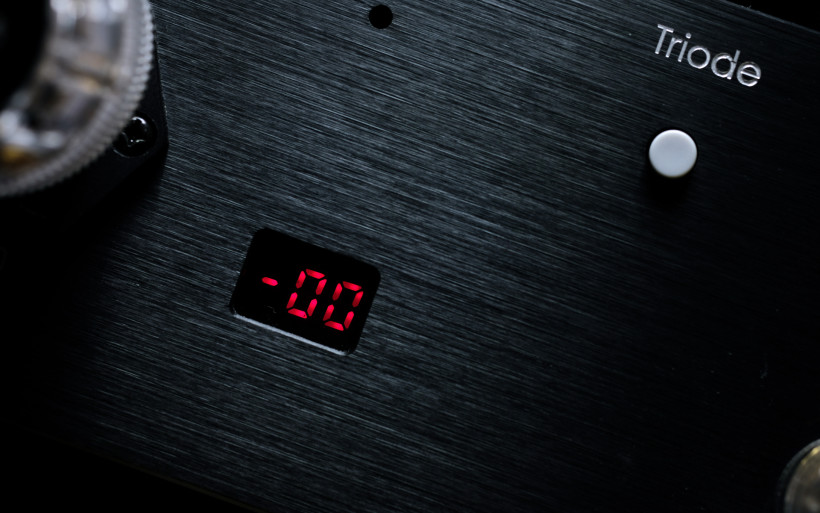 Highly likely this was mentioned a number of times already, but here goes again. Ayon’s rooms I’ve found sound wise not only very open, airy, energetic, powerful and tight, but also subtle when needed, tuneful and loaded with harmonics specific to valves. Such a result didn’t put guts, thickness, high temperature and trimmed top on the pedestal. On the contrary, instead of putting one to sleep via these measures, to my ears Ayon’s sound always acts along the lines of a finely balanced yet very stimulating Italian espresso, which I could drink every single day for years to come without any adjustments involved. This I’m sure of.
Highly likely this was mentioned a number of times already, but here goes again. Ayon’s rooms I’ve found sound wise not only very open, airy, energetic, powerful and tight, but also subtle when needed, tuneful and loaded with harmonics specific to valves. Such a result didn’t put guts, thickness, high temperature and trimmed top on the pedestal. On the contrary, instead of putting one to sleep via these measures, to my ears Ayon’s sound always acts along the lines of a finely balanced yet very stimulating Italian espresso, which I could drink every single day for years to come without any adjustments involved. This I’m sure of.
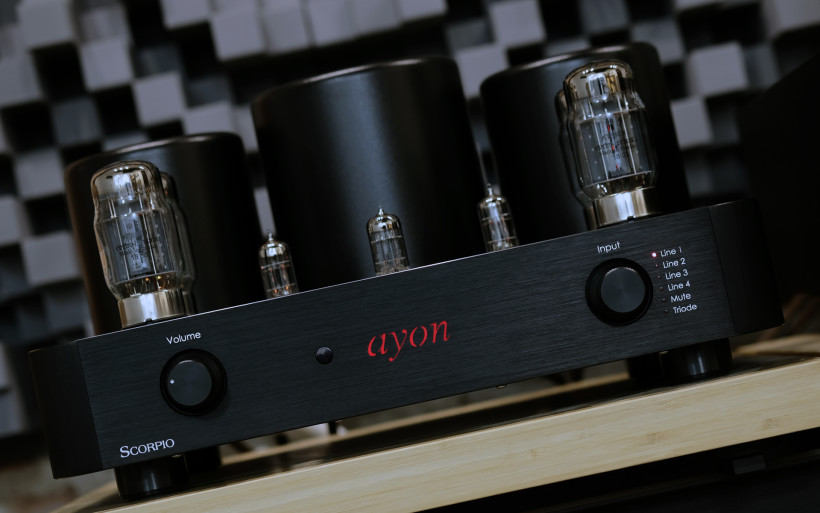 Subjectively speaking, Ayon’s direct and clear sound profile I fancy more and more from one event to another. I can’t say whether this happens due to me being more understanding and appreciative towards Gerhard’s work over the years or the two of us simply into similar voicing scheme by coincidence. Personal fads or biases are of minor importance, on the contrary to Ayon’s performance free from obvious weaknesses, fully engaging, entertaining and lively to my very ears. A while ago I’ve stumbled upon a remark that sound fast, transparent and up there on tightness with transistors, though also very much valve alike as far as imaging and temperature go is the Ayon’s way. After all evidence collected over some three years or so, and past the Scorpio adventure, all I can say now is that I fully agree with this description.
Subjectively speaking, Ayon’s direct and clear sound profile I fancy more and more from one event to another. I can’t say whether this happens due to me being more understanding and appreciative towards Gerhard’s work over the years or the two of us simply into similar voicing scheme by coincidence. Personal fads or biases are of minor importance, on the contrary to Ayon’s performance free from obvious weaknesses, fully engaging, entertaining and lively to my very ears. A while ago I’ve stumbled upon a remark that sound fast, transparent and up there on tightness with transistors, though also very much valve alike as far as imaging and temperature go is the Ayon’s way. After all evidence collected over some three years or so, and past the Scorpio adventure, all I can say now is that I fully agree with this description.
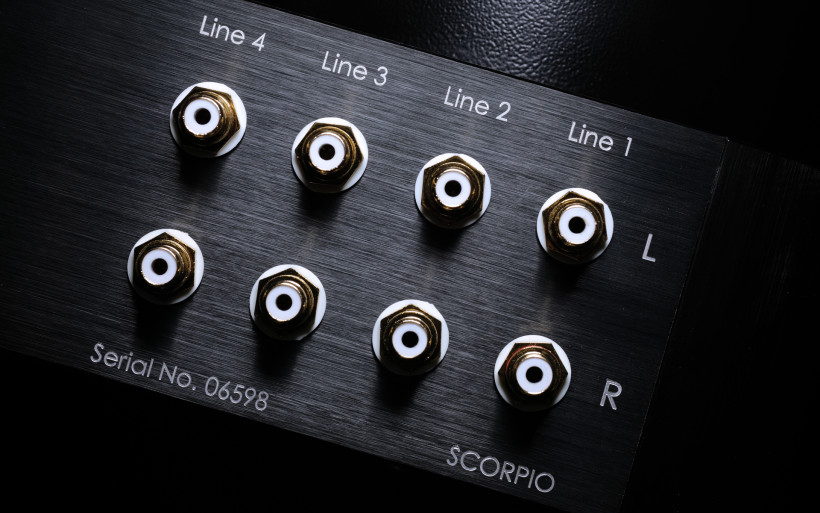 Martin Gateley’s efficient dipoles were the main reason why I accepted the Scorpio assignment. These speakers the man kindly allowed me to use for a bit longer, which introduced many opportunities to review hardware I usually avoid, i.e. low powered valve amps. The reason is quite obvious, in most scenarios my W8 floorstanders need far more to get going, at least that’s my take on this Swiss case after years of extensive triangulations with various hardware. That’s why the initial plan was based on marrying the Scorpio to Libération in an instant and without any hesitation. Plans tend to fail once in a while, this one surely did early on and what followed surprised me very much. The day of the Austrian loaner’s arrival was full of activities, I had very little time to investigate and was almost closing my ‘office’ for the night. However, Sven’s narrow poles used an hour earlier were set up in the main area still, thus the decision was made to start with these first, just to witness yet again how notorious they are and to check whether the Scorpio survived the trip. Several minutes later the result surpassed my mild expectations by proverbial mile and the Scorpio fed my W8 for a week with no hardware changes along the road. That’s how good this combination proved to be. It caught me off guard completely.
Martin Gateley’s efficient dipoles were the main reason why I accepted the Scorpio assignment. These speakers the man kindly allowed me to use for a bit longer, which introduced many opportunities to review hardware I usually avoid, i.e. low powered valve amps. The reason is quite obvious, in most scenarios my W8 floorstanders need far more to get going, at least that’s my take on this Swiss case after years of extensive triangulations with various hardware. That’s why the initial plan was based on marrying the Scorpio to Libération in an instant and without any hesitation. Plans tend to fail once in a while, this one surely did early on and what followed surprised me very much. The day of the Austrian loaner’s arrival was full of activities, I had very little time to investigate and was almost closing my ‘office’ for the night. However, Sven’s narrow poles used an hour earlier were set up in the main area still, thus the decision was made to start with these first, just to witness yet again how notorious they are and to check whether the Scorpio survived the trip. Several minutes later the result surpassed my mild expectations by proverbial mile and the Scorpio fed my W8 for a week with no hardware changes along the road. That’s how good this combination proved to be. It caught me off guard completely.
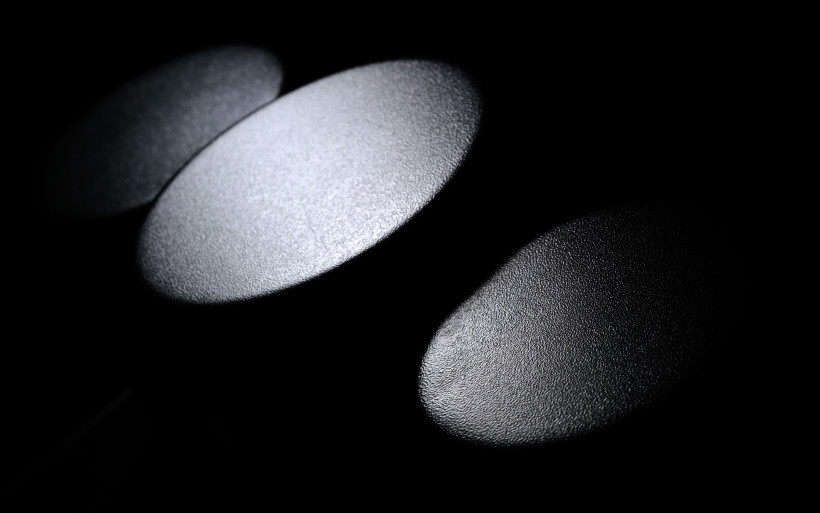 The recent adventure with Bakoon AMP-13R gave me something to think about. Boenicke W8 enjoyed its company a lot, although the combination I viewed as a positive one-off incident, a highly unrealistic rare synergy case, which won’t be repeated anytime soon. And there you have it, Ayon Scorpio has arrived several weeks later and turned things upside down as equally swiftly. Since these two integrated machines didn’t occupy my place at the same time, I won’t compare them. Their different voicing is a given, but potential to handle my Swiss load seemed to be similar to a point and most likely Ayon’s item would’ve had an edge over the AMP-13R at higher SPL levels. Nonetheless, the important bit is fairly low power output of both integrated amps, whereas the Scorpio introduced no lesser the “OK, you got me there…” shocker. What an interesting way to say ‘hello’ to one unsuspecting reporter.
The recent adventure with Bakoon AMP-13R gave me something to think about. Boenicke W8 enjoyed its company a lot, although the combination I viewed as a positive one-off incident, a highly unrealistic rare synergy case, which won’t be repeated anytime soon. And there you have it, Ayon Scorpio has arrived several weeks later and turned things upside down as equally swiftly. Since these two integrated machines didn’t occupy my place at the same time, I won’t compare them. Their different voicing is a given, but potential to handle my Swiss load seemed to be similar to a point and most likely Ayon’s item would’ve had an edge over the AMP-13R at higher SPL levels. Nonetheless, the important bit is fairly low power output of both integrated amps, whereas the Scorpio introduced no lesser the “OK, you got me there…” shocker. What an interesting way to say ‘hello’ to one unsuspecting reporter.
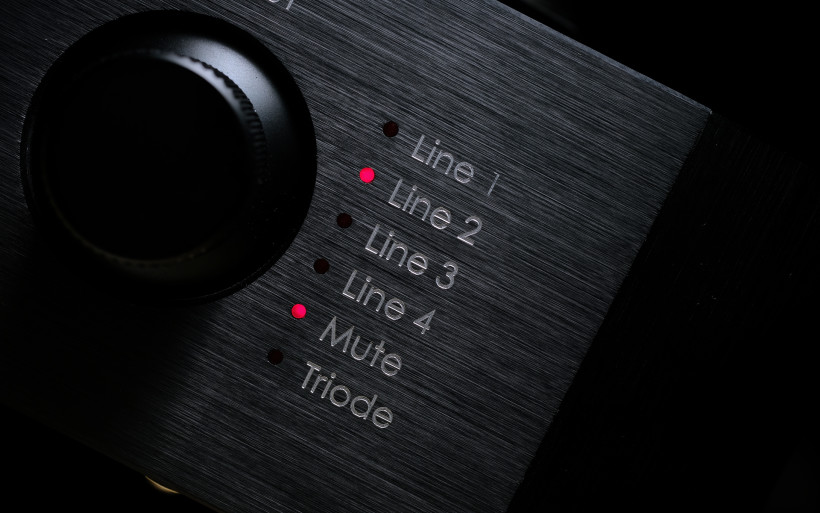 Ayon Scorpio with Boenicke W8 delivered impressively powerful and effortless sound right from the get-go. Truth told, the word ‘powerful’ only partially describes what actually was on. Instead of heading back home, this fully expressive, throated, swift and punchy result forced me to sit down, crank the volume way up and see whether my HQ’s walls will survive. There was a number of reasons why I was this surprised. Quick sound doesn’t shock in the long run, that’s not enough. But full bandwidth served tightly all across the board via ‘mere’ 45wpc in case of Boenicke W8 and with no major price to pay? Now that’s respectable to say the least. Ben Lukas Boyensen’s aka Hecq’s “Steeltongued” was on. This track in particular is full of synthetic bass and its imaging is of truly gargantuan proportions. The Scorpio sang without any hiccups; it went surprisingly low and was very quick about it to have my eardrums massaged via short bursts of impulses free from any boom or shakiness. Put shortly, the Austrian pulled off what in theory seemed to be beyond its reach.
Ayon Scorpio with Boenicke W8 delivered impressively powerful and effortless sound right from the get-go. Truth told, the word ‘powerful’ only partially describes what actually was on. Instead of heading back home, this fully expressive, throated, swift and punchy result forced me to sit down, crank the volume way up and see whether my HQ’s walls will survive. There was a number of reasons why I was this surprised. Quick sound doesn’t shock in the long run, that’s not enough. But full bandwidth served tightly all across the board via ‘mere’ 45wpc in case of Boenicke W8 and with no major price to pay? Now that’s respectable to say the least. Ben Lukas Boyensen’s aka Hecq’s “Steeltongued” was on. This track in particular is full of synthetic bass and its imaging is of truly gargantuan proportions. The Scorpio sang without any hiccups; it went surprisingly low and was very quick about it to have my eardrums massaged via short bursts of impulses free from any boom or shakiness. Put shortly, the Austrian pulled off what in theory seemed to be beyond its reach.
 The more hi-octane music fuel I burned through, the more clear it became that speed and the ability to paint unrestrained dynamic contrasts regardless of their scale are truly prominent Scorpio’s features. This deck seriously isn’t scared of entertaining music best served with high SPL, not at all. At some point I switched to Kinki Studio’s EX-B7/P7 monos (250wpc into 2-8Ω) plus preamp and the result was even gutsier, more elastic and thunderous. However, this doesn’t diminish what the Scorpio with far lesser horsepower under its hood did at my place. Its on-site list of features sports readiness for difficult loads and I fully agree with this statement.
The more hi-octane music fuel I burned through, the more clear it became that speed and the ability to paint unrestrained dynamic contrasts regardless of their scale are truly prominent Scorpio’s features. This deck seriously isn’t scared of entertaining music best served with high SPL, not at all. At some point I switched to Kinki Studio’s EX-B7/P7 monos (250wpc into 2-8Ω) plus preamp and the result was even gutsier, more elastic and thunderous. However, this doesn’t diminish what the Scorpio with far lesser horsepower under its hood did at my place. Its on-site list of features sports readiness for difficult loads and I fully agree with this statement.
 Boenicke W8 floorstanders known for their abnormal imaging potential never disappoint on this count, though there’s a substantial difference on this count between amps connected to them. In this context, Ayon Scorpio didn’t reduce the view the W8 created. Full bandwidth surely helped the Austrian in pulling this off, though this particular product sounds very openly, presently and substantially on its own, such liberated voicing is a part of its DNA. Virtual sound sources it paints big, clear, elegant and set rather freely instead of abnormal chiseling and all these elements prove to be efficient image boosting measures. Not only this, said openness also discards any potential veil between a listener and a wall of sound. When this lively, direct and clear message is additionally enhanced via generously differentiated texturing and muscle tissue present on all vocals and instruments, a result served like so is nicely balanced, easygoing and complete. Ayon Scorpio doesn’t suffer from dilution, abnormal thickness or sound too ethereal and skinny. Normally such profile I’d consider as safe and possibly also boring in the long run. However, the Austrian spices things up via its inherent high-performance character and that’s the reason why boredom seems to be impossible with this machine.
Boenicke W8 floorstanders known for their abnormal imaging potential never disappoint on this count, though there’s a substantial difference on this count between amps connected to them. In this context, Ayon Scorpio didn’t reduce the view the W8 created. Full bandwidth surely helped the Austrian in pulling this off, though this particular product sounds very openly, presently and substantially on its own, such liberated voicing is a part of its DNA. Virtual sound sources it paints big, clear, elegant and set rather freely instead of abnormal chiseling and all these elements prove to be efficient image boosting measures. Not only this, said openness also discards any potential veil between a listener and a wall of sound. When this lively, direct and clear message is additionally enhanced via generously differentiated texturing and muscle tissue present on all vocals and instruments, a result served like so is nicely balanced, easygoing and complete. Ayon Scorpio doesn’t suffer from dilution, abnormal thickness or sound too ethereal and skinny. Normally such profile I’d consider as safe and possibly also boring in the long run. However, the Austrian spices things up via its inherent high-performance character and that’s the reason why boredom seems to be impossible with this machine.
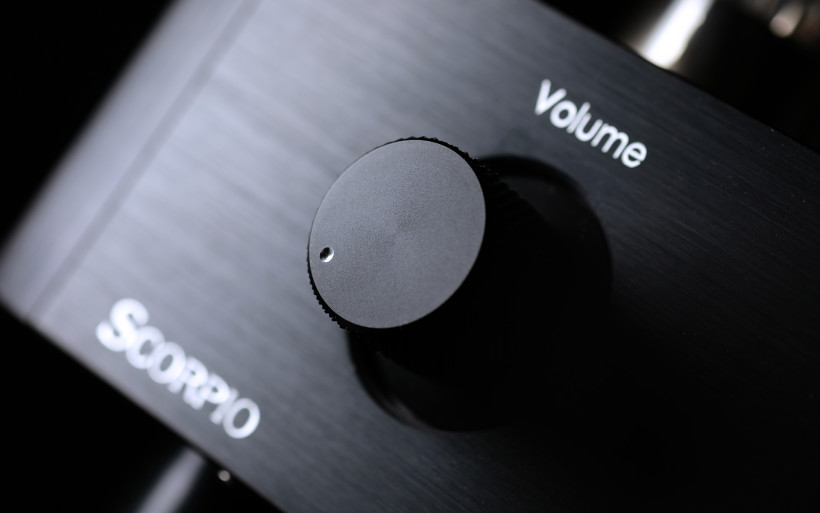 Another Scorpio’s feature which netted my attention quickly was pleasantly breathable and lively space it created. This happened due to the product’s fabulous dynamic potential and tight control over connected load, which at my place translated to rhythm very much in check regardless of a track’s complexity and feistiness. My reference setup with the Austrian sang in a very big and vibrant way, although repertoire factored in as well. Apocalyptica’s and Rodrigo y Gabriela’s live gigs sounded fantastically; information about musicians’ locations and all screaming audience was very clear and the same story was with substantial differences between various types of space. Open or closed, cameral or big, wide or narrow, I simply knew what was what instantly. Grandeur and tension I’ve found on “Predator” and “Inception” soundtracks, whereas music by Wardruna and Danheim provided far more cameral and calmer experience. My point is that Ayon Scorpio grasped the vibe of each album very well to introduce it in always admirably intense yet distinctive fashion. I strongly believe that the ability to perform such magic this clearly is one of key pillars of truly high class sound.
Another Scorpio’s feature which netted my attention quickly was pleasantly breathable and lively space it created. This happened due to the product’s fabulous dynamic potential and tight control over connected load, which at my place translated to rhythm very much in check regardless of a track’s complexity and feistiness. My reference setup with the Austrian sang in a very big and vibrant way, although repertoire factored in as well. Apocalyptica’s and Rodrigo y Gabriela’s live gigs sounded fantastically; information about musicians’ locations and all screaming audience was very clear and the same story was with substantial differences between various types of space. Open or closed, cameral or big, wide or narrow, I simply knew what was what instantly. Grandeur and tension I’ve found on “Predator” and “Inception” soundtracks, whereas music by Wardruna and Danheim provided far more cameral and calmer experience. My point is that Ayon Scorpio grasped the vibe of each album very well to introduce it in always admirably intense yet distinctive fashion. I strongly believe that the ability to perform such magic this clearly is one of key pillars of truly high class sound.
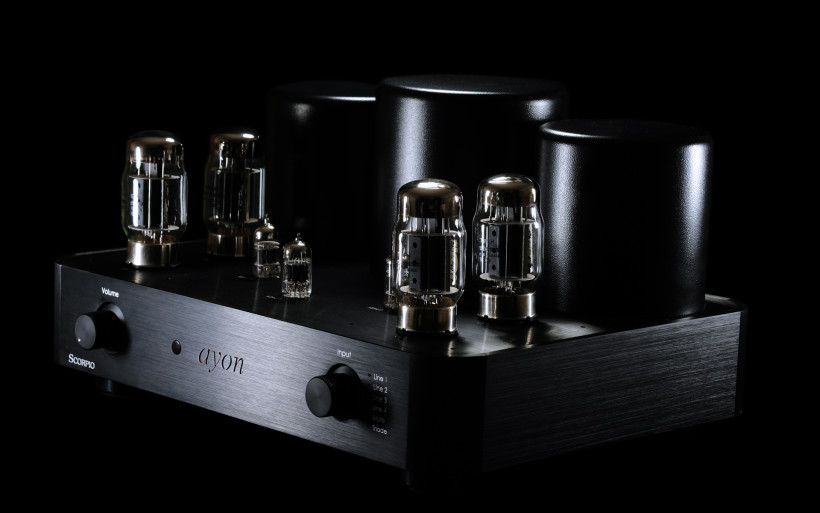 Extensive experience with repertoire recorded at times in vastly different locations netted one common observation; the first row of musicians was served a fair bit closer than I’m used to and such imaging character reminded me of my previous DAC – LampizatOr Golden Gate. This one also painted pictures well-developed in each direction yet emphasized the same thing; it shortened distance to the closest sound sources to net more direct contact with them. Such performance materialized all instruments at my place instead of taking me to its own, Scorpio did something along these lines as well and I enjoyed such view a lot. This feature in particular also fits well to this deck’s sound profile. Sound quick, strong, open and with key performers up close adds up in my book if proper heft tags along. Luckily Ayon’s integrated was equipped on this count as well.
Extensive experience with repertoire recorded at times in vastly different locations netted one common observation; the first row of musicians was served a fair bit closer than I’m used to and such imaging character reminded me of my previous DAC – LampizatOr Golden Gate. This one also painted pictures well-developed in each direction yet emphasized the same thing; it shortened distance to the closest sound sources to net more direct contact with them. Such performance materialized all instruments at my place instead of taking me to its own, Scorpio did something along these lines as well and I enjoyed such view a lot. This feature in particular also fits well to this deck’s sound profile. Sound quick, strong, open and with key performers up close adds up in my book if proper heft tags along. Luckily Ayon’s integrated was equipped on this count as well.
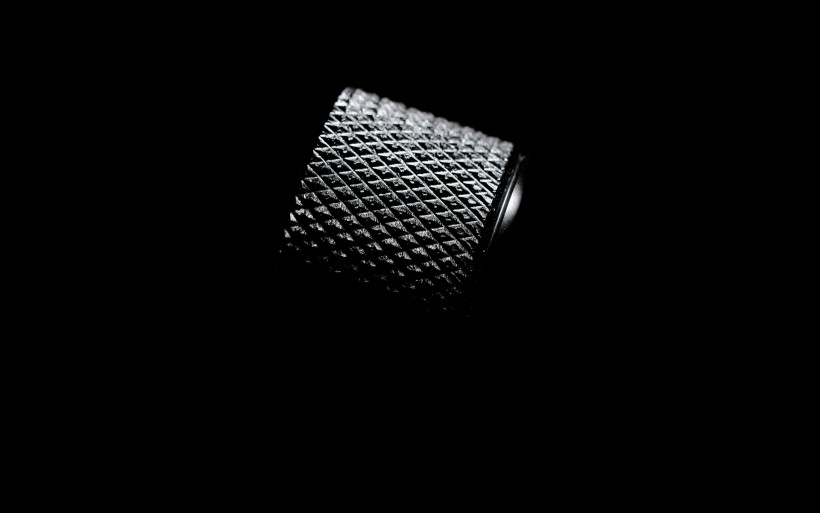 Many individuals would probably view sound of a machine described above as suitable for transistor affairs. Ayon Scorpio doesn’t sugarcoat music via obvious measures, its warmth is carefully dosed as an additive and not key ingredient. However, the more listening time passed, the more sensible it became that this is a true valve product. Underneath its coat made of quickness and openness there’s yet another one loaded with harmonics, whereas minimalist music based on live instruments and clear vocal lines was able to extract this aroma more explicitly. Colin Stetson’s sax, Sarah Neufeld’s violin or acoustic guitars by the Mexican team mentioned above were all tuneful, pleasantly moist, smooth and tangible. Mike Oldfield’s early work confirmed my findings and so did Mari Boine’s and Eivør Pálsdóttir’s voice.
Many individuals would probably view sound of a machine described above as suitable for transistor affairs. Ayon Scorpio doesn’t sugarcoat music via obvious measures, its warmth is carefully dosed as an additive and not key ingredient. However, the more listening time passed, the more sensible it became that this is a true valve product. Underneath its coat made of quickness and openness there’s yet another one loaded with harmonics, whereas minimalist music based on live instruments and clear vocal lines was able to extract this aroma more explicitly. Colin Stetson’s sax, Sarah Neufeld’s violin or acoustic guitars by the Mexican team mentioned above were all tuneful, pleasantly moist, smooth and tangible. Mike Oldfield’s early work confirmed my findings and so did Mari Boine’s and Eivør Pálsdóttir’s voice.
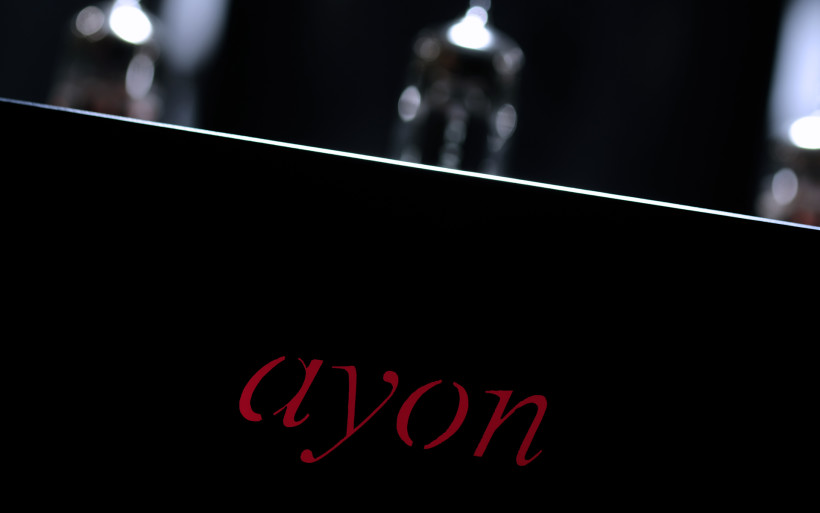 All checked out and was in place, Gerhard’s integrated handled everything I had in enjoyable fashion, which coloured me impressed once this deck’s price was taken into account. Subtle, intimate and posh gentle female vocal lines went hand in hand with tight, raw and jumpy rock and industrial section of my playlist. Again, the Scorpio showcased music respectably distinctively regardless of its type, speed or complexity. Obviously feisty and fast, it didn’t lost its valve soul somewhere along the road to deliver the message adequately to repertoire.
All checked out and was in place, Gerhard’s integrated handled everything I had in enjoyable fashion, which coloured me impressed once this deck’s price was taken into account. Subtle, intimate and posh gentle female vocal lines went hand in hand with tight, raw and jumpy rock and industrial section of my playlist. Again, the Scorpio showcased music respectably distinctively regardless of its type, speed or complexity. Obviously feisty and fast, it didn’t lost its valve soul somewhere along the road to deliver the message adequately to repertoire.
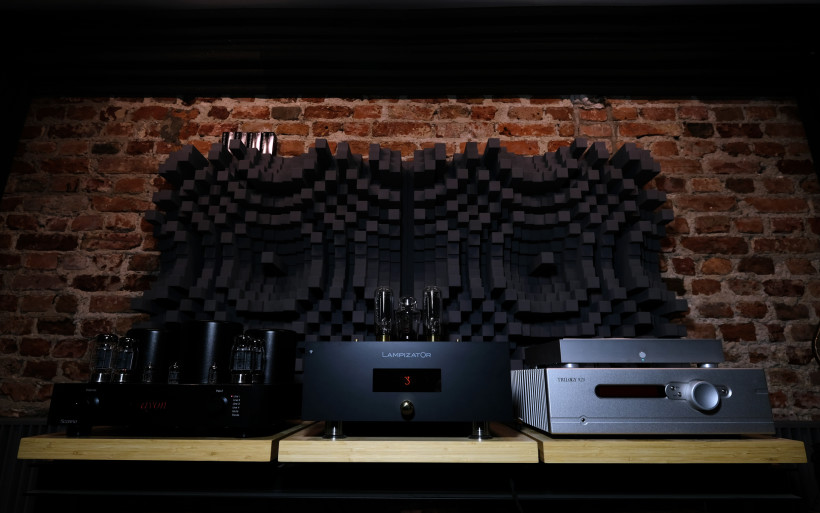 The confession above is based on Boenicke W8 on duty with the Scorpio set in more powerful pentode mode. It quickly turned out that the triode option’s usability with this particular load was strongly debatable. One push of that gray innocent button found on the Scorpio’s rear resulted in sound far slower, sound sources generously tall and wide as is even bigger and on top of that imaging handicapped; locked in-between speakers and flatter. Such effect clearly was a miss, which led me to another set of speakers.
The confession above is based on Boenicke W8 on duty with the Scorpio set in more powerful pentode mode. It quickly turned out that the triode option’s usability with this particular load was strongly debatable. One push of that gray innocent button found on the Scorpio’s rear resulted in sound far slower, sound sources generously tall and wide as is even bigger and on top of that imaging handicapped; locked in-between speakers and flatter. Such effect clearly was a miss, which led me to another set of speakers.
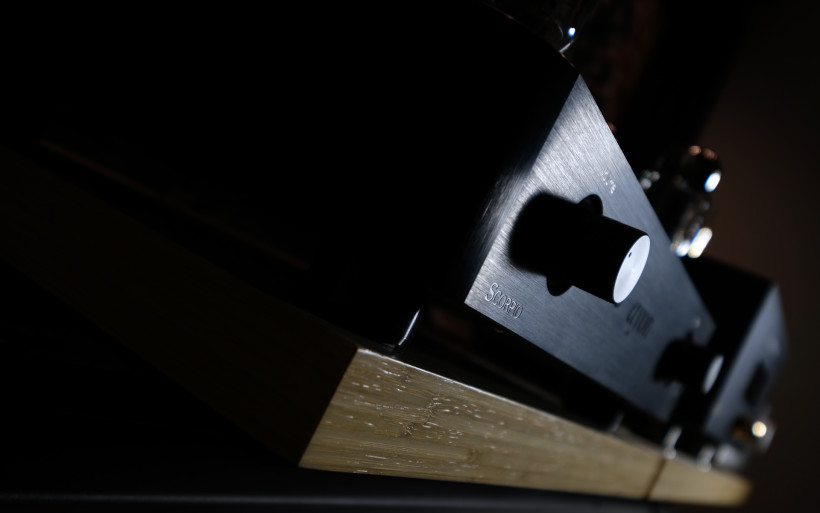 Ayon Scorpio on the job with Boenicke W8 wasn’t pushed above 11 o’clock, though usually this team sang with volume fixed at around 10, whereas soundkaos Libération stopped one hour earlier to have the same SPL of around 77dB at my place. Swiss dipoles also expressed rather bluntly that the very viable pentode option in case of my W8 didn’t work this time around. Libby the Owl performed quickly and vigorously as per usual, but also shoutier and leaner than expected. The triode setting shifted the meta in the same exact direction yet again. Things got a bit slower, less grand on image size count and with all on-stage acts bigger. However, in case of Libération this change was significantly in plus. Even though sound was a bit slower and more intimate, it became heftier, more euphonic and subtler with no veil at all. Figuratively speaking more music was injected into music itself, the total bill for such beneficial service was minimal at best and that’s what we know as a synergy.
Ayon Scorpio on the job with Boenicke W8 wasn’t pushed above 11 o’clock, though usually this team sang with volume fixed at around 10, whereas soundkaos Libération stopped one hour earlier to have the same SPL of around 77dB at my place. Swiss dipoles also expressed rather bluntly that the very viable pentode option in case of my W8 didn’t work this time around. Libby the Owl performed quickly and vigorously as per usual, but also shoutier and leaner than expected. The triode setting shifted the meta in the same exact direction yet again. Things got a bit slower, less grand on image size count and with all on-stage acts bigger. However, in case of Libération this change was significantly in plus. Even though sound was a bit slower and more intimate, it became heftier, more euphonic and subtler with no veil at all. Figuratively speaking more music was injected into music itself, the total bill for such beneficial service was minimal at best and that’s what we know as a synergy.
 Swiss dipoles’ sound is even more open, elastic and lively in comparison to my W8 and that’s the reason why mild temperature increase and somewhat limited imaging didn’t hit them even remotely as hard as my daily speakers. Libération’s woofers moved without any signs of fatigue and regardless of Scorpio’s valve mode engaged led to very much safe bass in quantity, attack and impulse, whereas everything above this FR part nicely moist and pleasant sealed the deal. I could go on and on about Martin’s dipoles with the Austrian, but the gist is hopefully understandable: both valve options this integrated introduced proved to be very useful, albeit with two different companions. After hours of triangulations with all tools available I’ve found Boenicke W8 driven by the Scorpio in pentode mode the most surprising and my subjective favourite, which the description above clearly shows.
Swiss dipoles’ sound is even more open, elastic and lively in comparison to my W8 and that’s the reason why mild temperature increase and somewhat limited imaging didn’t hit them even remotely as hard as my daily speakers. Libération’s woofers moved without any signs of fatigue and regardless of Scorpio’s valve mode engaged led to very much safe bass in quantity, attack and impulse, whereas everything above this FR part nicely moist and pleasant sealed the deal. I could go on and on about Martin’s dipoles with the Austrian, but the gist is hopefully understandable: both valve options this integrated introduced proved to be very useful, albeit with two different companions. After hours of triangulations with all tools available I’ve found Boenicke W8 driven by the Scorpio in pentode mode the most surprising and my subjective favourite, which the description above clearly shows.
Summary
Several Ayon’s trade rooms visited over three years or so invoked mild though quite precise expectations towards this company’s Scorpio integrated. I counted on this machine’s voicing at least partially similar to Gerhard’s setups auditioned in Warsaw and Munich and that’s what happened indeed, albeit to a far greater extent than I originally assumed. This writing’s integrated introduced Ayon’s sound profile very well and pleasantly surprised me on many counts. It’s a very good and well-thought audio product.
As far as its functionality goes, Gerhard’s most affordable integrated proved to be solid and delivered no reason to nitpick. Two different operation modes are its undeniable assets, the same story is with predictable behaviour and build quality leaves no room for complaints as well. On these counts a product this mature and nicely executed could’ve been done only by a well-established audio house and Ayon is one of the sort indeed. Subjectively speaking I also grew fond of Scorpio’s visuals; matte black dressing goes rather well with red lights and large Ayon logo if someone asks me, whereas nicely exposed glass fashionably completes the product.
Although key specs indicated otherwise, Ayon Scorpio married to my W8 quickly led to a truly impressive outcome; fast, lively, effortless, big, powerful and scale wise grand. Martin Gateley’s dipoles unsurprisingly performed like so with ease as well, yet there was no valid reason to expect a result this good with my daily floorstanders. Valve charm and smoothness served in highly involving and exciting fashion in both Swiss cases also proved me that Ayon Scorpio is perfectly capable of showing its gentle, fetching and euphonic side accordingly to repertoire’s demand. However, the true ace up in this integrated’s sleeve is its tastefully and coherently executed raw musical fire. Instead of caressing associated with slow cruising, this one will take you on a rollercoaster ride and won’t let go. Please do listen to this attractively priced predatory arachnid once an opportunity strikes. Highly likely you’ll feel its sting as similarly stimulating and vigorous as I had. ‘Till next time!
Associated equipment:
- Amplifiers: Kinki Audio EX-M1, Trilogy 925
- Sources: LampizatOr Pacific (KR Audio T-100 + KR Audio 5U4G Ltd. Ed.), AMR DP-777SE
- Speakers: Boenicke Audio W8, soundkaos Libération
- Transports: fidata HFAS-S10U
- Speaker cables: Audiomica Laboratory Celes Excellence, LessLoss C-MARC
- Interconnects: Audiomica Laboratory Erys Excellence
- Power components: Gigawatt PC-3 SE EVO+, Gigawatt PF-2 + Gigawatt LC-2 MK2 + Forza AudioWorks Noir Concept/Audiomica Laboratory Ness Excellence/LessLoss C-MARC
- Rack: Franc Audio Accesories Wood Block Rack
- Music: NativeDSD
Retail prices of reviewed components in EU (excl. VAT):
- Ayon Scorpio:€3’750
Manufacturer: Ayon Audio


